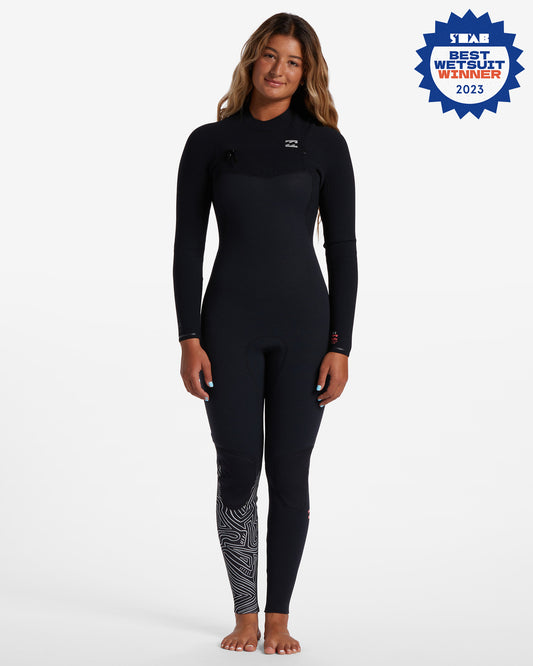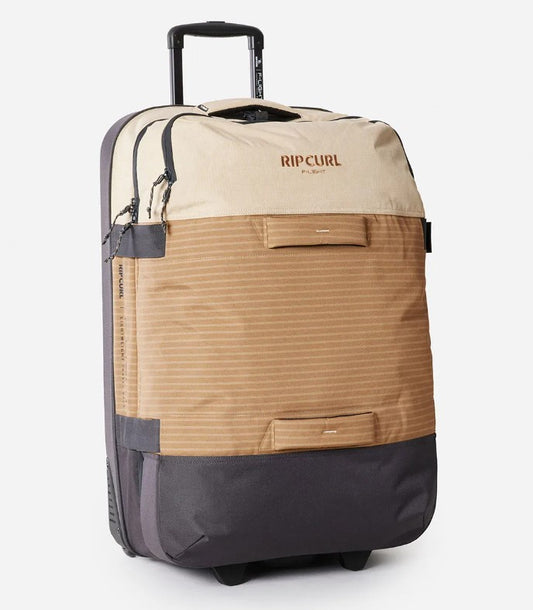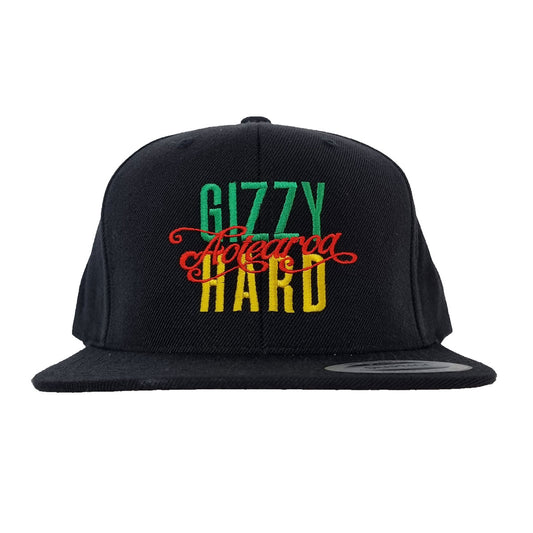Are you itching to get out and catch some waves but can't imagine getting wet in the chilling winter cold? Don't let the seasons stop you. Surfing in New Zealand is a unique and thrilling experience where the surf can be more powerful and consistent in different spots. Embrace the surf year-round with just a few adjustments. From choosing the right equipment from a surf shop in NZ to mastering strategic spot selection, we have you covered with all the valuable tips and tricks to ensure an enjoyable winter surfing adventure.

1. Dress for the Occasion
The right wetsuit is essential for warmth and comfort in cold waters. The desired wetsuit thickness depends on the location and water temperature. We recommend a 4/3mm wetsuit for most of the North Island, which provides comfortable warmth and protection from the wind and cold water. However, if you're venturing to the South Island or colder regions, we advise using a thicker wetsuit, such as a 5/4mm, to combat the lower temperatures. When looking for a high-quality winter surfing wetsuit to keep you warm in winter, buy from proven, reputable brands like O’Neill or Ripcurl.
Wetsuit accessories like booties, gloves, and hoods play a crucial role in enhancing warmth, improving your winter surfing experience, and protecting you from the cold. When exposed to the cold, your body works dynamically to keep your core temperature at approximately 37 degrees. As your periphery is exposed to the elements, your blood vessels start to narrow, decreasing circulation to your extremities to retain central warm blood flow for the crucial organs. You can delay this process and keep your body functioning normally for longer by equipping wetsuit accessories.
Booties provide insulation and prevent your feet from freezing, ensuring better board feel and coordination. Generally, being unable to use your fingers normally is the first sign of hypothermia starting to kick in. Gloves keep your hands warm and help maintain dexterity when paddling, preventing you from losing control of your fingers. Wetsuit hoods are key to preventing the dreaded “Ice-cream headaches” on your paddle out, as they help retain body heat and protect your head and ears from the cold. They also protect against “Surfer’s ear”.
Consider your preferences and the specific water conditions when selecting the perfect wetsuit accessories and the order you put them on. Most surfers wear their work booties first, then their hood and gloves last. We recommend starting with the hood as it helps to retain the most heat.
2. Choose the Right Surfboard

During winter, surfers wearing thicker wetsuits sometimes ride different surfboards than in summer to accommodate the additional weight and challenging conditions. Surfboards featuring extra foam and rail length help to maintain optimal performance. These boards offer better paddling ability and aid in maintaining speed and control, especially in winter as the surf gets bigger and more powerful. This improves control and performance when dealing with winter surfing and makes it easier to catch waves.
We recommend considering your preferences, skill level, and the specific wave types encountered during winter at your local breaks to choose the perfect surfboard for your needs. Talk to one of the staff at Blitz Surf Shop if you have problems with your winter equipment, and we can provide a good solution for your needs.
3. Select a Strategic Surf Spot
When selecting a surf spot for winter surfing in New Zealand, you must consider several factors to ensure optimal conditions. These include:
- Tide: The tide is crucial to wave quality and can significantly impact your surfing experience. Research the best conditions for your local breaks or pick the brains of a local surfer if you are a visitor. Different surf spots have varying characteristics and will be better on high, mid, or lower tides. Sometimes, especially with beach breaks like Wainui Beach, the optimal tide can vary depending on the current sand banks and swell direction. We recommend checking tide charts and selecting a surf spot with an appropriate tide.
- Wind: Offshore winds that blow from the land towards the ocean groom the waves and create clean faces, improving surf conditions and wave quality. Consider the prevailing wind patterns in the region and choose a spot where the wind direction complements the wave direction. Read weather maps or tap into surf forecasting sites like Good Surf Now!
- Shelter: Seeking sheltered beaches can provide more consistent and manageable conditions for winter surfing if the weather is getting hectic. They are protected from direct exposure to strong wind and large swell, offering a more controlled environment for surfing. You can find these beaches in bays, coves, or areas with natural features that protect them from the elements. In our region, this could be a short extra drive up or down the coast and can feature less crowded conditions.
When selecting a surf spot, it's always beneficial to consult local surfers or check reliable surf forecasting websites for up-to-date information on wave conditions, tides, and wind patterns. Local knowledge can provide valuable insights into the best surf beaches in winter or those with perfect conditions on a particular day, ensuring an enjoyable and rewarding experience on the waves.
4. Have a Good Warm-Up Routine

This essential winter surfing tip helps prepare your body for the cold water and the physical demands of surfing.
- Start Warm:Avoid entering the water when you're cold. Your body temperature will drop rapidly to a point where your performance significantly decreases as it will become harder to stay warm. Wear warm clothing, headwear, and footwear to the beach and leave the heating on in your car. If you are not already warmed up, you can do light exercises to get your heart rate up and warm your muscles.
- Perform Stretching Exercises:This can help improve your flexibility and prevent injuries. Focus on stretches that target key muscle groups used in surfing, such as the shoulders, back, hips, and legs.
- Stay Active:Once in the water, keep moving to maintain warmth. Regular paddling not only helps circulate blood but keeps your body temperature up. When waiting for waves out the back, sit on your board to keep as much of your body out of the water as possible to slow the cooling process.
- Avoid Prolonged Immersion: While duck dives are often necessary to get out, try to minimise prolonged periods with your entire body underwater. Fully submerging your body in cold water can cause rapid heat loss and shorten how long you can spend in the water. Time your paddle or choose the best spot to enter the water to minimise your time underwater.
- Stay Hydrated: This is crucial even in colder conditions, as the body still perspires and loses fluids. Drink plenty of water before and during your surf session to prevent dehydration and muscle cramps.
5. Stay Warm Post-Surf
- Pour Warm Water into Wetsuit: Some surfers have some warm water handy after finishing their surf to pour over themselves before dressing.
- Change into Warm Clothes:Prepare warm clothing after removing your wetsuit—layer with thermal clothing, jackets and/or fleece, pants, and warm footwear. Beanies help warm your body quickly; gloves can help if you've lost feeling in your fingertips. Use a hooded towel like the ones we provide at Blitz Surf Shop to decrease exposure to the cold when dressing or undressing.
- Prepare a Hot Drink: Drinking warm beverages like tea, coffee, or hot chocolate after surfing will help replenish fluids and raise your body temperature. It's important to stay hydrated even in colder conditions, especially after a long day of winter surfing.
- Dry Your Gear:Properly drying your wetsuit and accessories is essential for maintaining longevity, starting your surf warm, and preventing odours. Rinse your wetsuit with fresh water to remove salt and sand, then hang it up to dry in a shaded area. If you have time before your next surf, dry it inside out and the right way around. Taking care of your gear ensures it is ready for your next surf session and will decrease the risk of damage. Some wetsuit models like the Rip Curl Flashbomb and O’Neill Hyperfreak Fire series have faster drying properties than other wetsuits and can seriously enhance your winter surfing experience. If you surf regularly in winter in a cold climate, you should buy the best wetsuit you can afford.
- Protect Your Ears:Use ear plugs like Surfears 3.0 to prevent the dreaded Surfers Ear. This medical condition is caused by exposure to cold water and wind, where bony structures grow into your ear canal. This can lead to an increased risk of ear infections and the potential need for surgery in the future. Drain any remaining water from your ears and tilt your head to the side while gently pulling your earlobe to help remove water. You can also use special alcohol-based drops to dry and prevent infections caused by excess moisture in the ears.
A One-Stop Shop for All Your Winter Surfing Essentials
Following our helpful winter surfing tips, you can stay warm and comfortable while catching some waves in the coldest months of the year. Consult with local surf shops or experienced surfers for advice.
Feel free to reach out to the friendly team at Blitz Surf Shop! Our experienced staff can provide valuable insights and recommendations tailored to the winter surfing conditions in your area to help you find the right surfing gear. Alternatively, we'd love to chat if you're a visitor and need local advice on surfing in Gisborne.
Don't let the cold stop you; enhance your winter surfing experience and performance by shopping online at Blitz Surf Shop for surfboards, bodyboards, wetsuits, warm winter clothing and more today.




